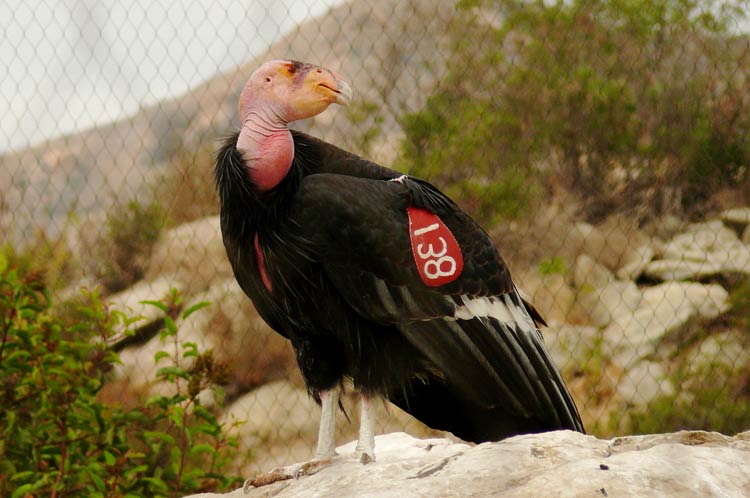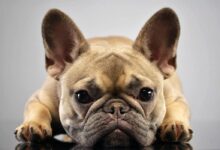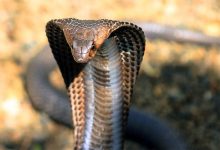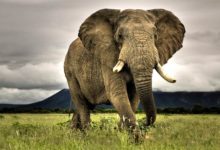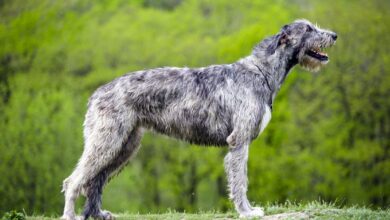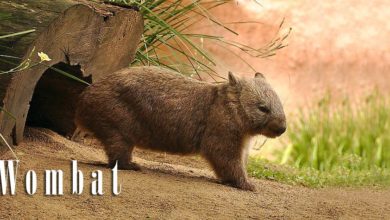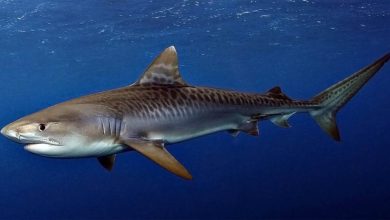California condor (Gymnogyps californianus)
The California condor, with its striking black feathers and nine-foot wingspan, is a magnificent bird that embodies the wild spirit of the American West. Endangered and revered, these birds have faced numerous challenges to their survival over the centuries, from habitat loss to lead poisoning. Yet, despite the odds, conservation efforts have helped bring the California condor back from the brink of extinction, and today they soar once more over the rugged landscapes of California, Arizona, and Utah, inspiring awe and wonder in all who witness their powerful flight.
The California condor (Gymnogyps californianus) is a large bird of prey found in North America, and is one of the largest land birds in the Western Hemisphere, with a wingspan that can reach up to 2.9 meters (9.5 feet) in length. The condor’s distinctive appearance includes a striking black plumage with a bare, red head and neck, and long, broad wings that are held in a slight V-shape when in flight.
California condors are carrion feeders, primarily feeding on the bodies of dead animals, including deer, elk, and other large mammals. They are also opportunistic feeders and will eat live prey, such as squirrels, if it is available.
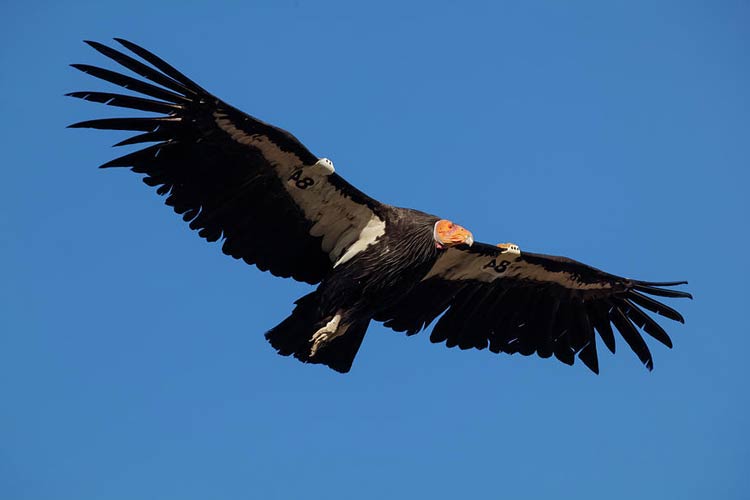
Condors are social birds and are often seen in groups, soaring high above the landscapes in search of food. They mate for life and lay only one egg every two years. The chicks stay with their parents for several months before they begin to explore on their own.
In the past, California condors were widespread throughout North America, but their population declined dramatically due to hunting, habitat loss, and the use of lead-based ammunition, which has resulted in lead poisoning. In 1987, only 27 birds remained, and the species was considered one of the most endangered in the world. However, through captive breeding programs and the removal of lead from ammunition, the population of California condors has increased, and as of 2021, there are over 400 individuals in the wild. In December 2022 there were 537 California condors, of which 336 lived in the wild.
Despite their recent success, the California condor continues to face numerous threats to their survival, and conservation efforts are ongoing to ensure their future in the wild.
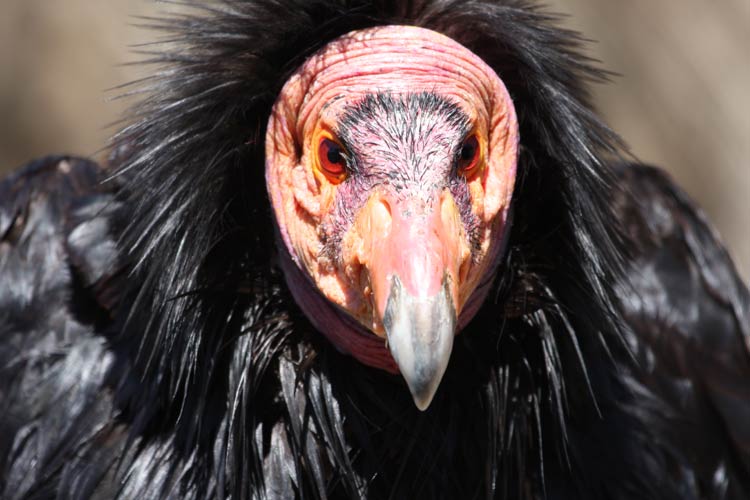
Taxonomy
- Kingdom: Animalia
- Phylum: Chordata
- Class: Aves
- Order: Cathartiformes
- Family: Cathartidae
- Genus: Gymnogyps
- Species: Gymnogyps californianus
The California condor is the only species in the genus Gymnogyps, and is a member of the family Cathartidae, which also includes other vultures such as the Andean condor and the turkey vulture.

Basic Facts About The California condor
- Size
California condors are large birds, with a body length of up to 140 cm (55 in) and a wingspan that can reach up to 3.4 m (11 ft) - Weight
They can weigh between 8-14 kilograms (18-31 lb), on average 8 to 9 kg (18 to 20 lb). - Habitat
California condors are native to the western coast of North America, and can be found in California, Arizona, and Utah. They prefer to live in remote, rugged landscapes such as mountains, canyons, and deserts. - Diet
California condors are scavengers, primarily feeding on the bodies of dead animals, including deer, elk, and other large mammals. They are also opportunistic feeders and will eat live prey, such as squirrels, if it is available. - Reproduction
California condors mate for life and lay only one egg every two years. The chicks stay with their parents for several months before they begin to explore on their own. - Migration
California condors do not migrate, but they are known to travel long distances in search of food. - Threats
The California condor population declined dramatically in the 20th century due to hunting, habitat loss, and lead poisoning from lead-based ammunition. Conservation efforts have helped bring the species back from the brink of extinction, but it still faces numerous threats to its survival, including lead exposure and habitat degradation.

Evolutionary history
The evolutionary history of the California condor is not well understood, but it is believed to have originated from a lineage of birds of prey that evolved in North America millions of years ago. Fossil evidence shows that the ancestors of the California condor lived in North America for millions of years, with the oldest known fossil being about 2 million years old.
Over time, the California condor evolved into its distinctive form, with adaptations such as its large size, powerful wings, and bald head that allow it to scavenge effectively. It once had a wide range across North America, from British Columbia to Baja California, but its range has declined over time due to a number of factors, including habitat loss and human impact.
Today, the California condor is considered to be one of the most endangered bird species in the world, with only a few hundred individuals remaining in the wild. Conservation efforts are underway to recover the population and protect this important species from extinction.
The California condor is a member of the family Cathartidae, which also includes the Andean condor and the extinct teratorns. Fossil evidence suggests that the California condor evolved from a common ancestor with the Andean condor about 4 million years ago.
The California condor once had a much larger range, covering much of North America from British Columbia to Baja California. However, as the landscape changed and human populations grew, the condor’s range contracted, and it became limited to the southwestern United States and northwestern Mexico.
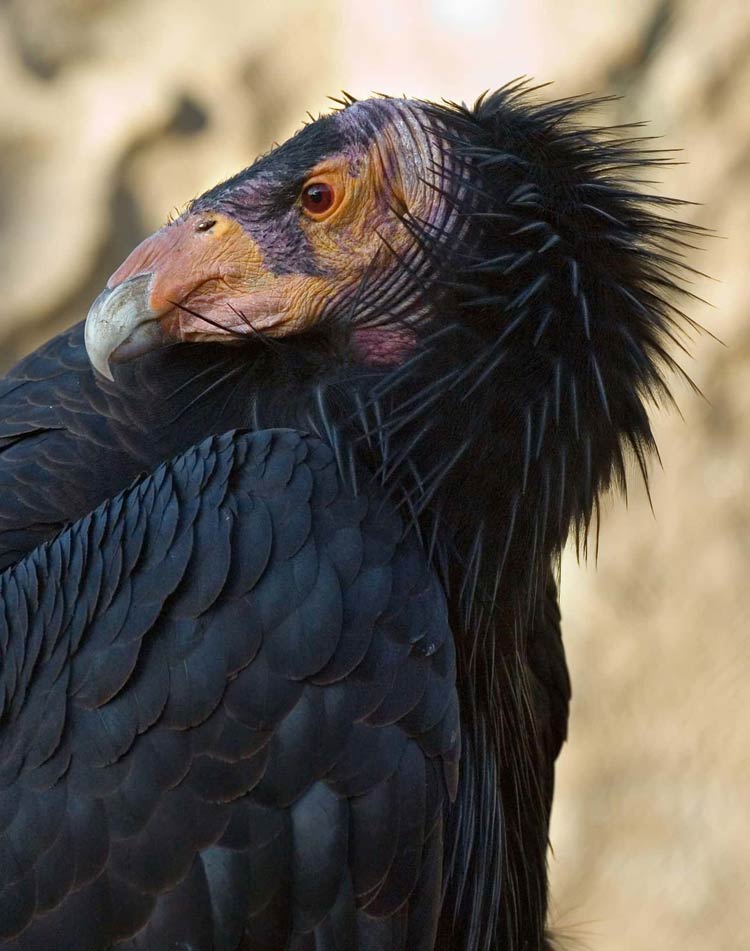
Distribution and habitat
The California condor (Gymnogyps californianus) is native to the western coast of North America, and can be found in California, Arizona, and Utah. They are a highly mobile species, and are known to travel long distances in search of food.
California condors prefer to live in remote, rugged landscapes such as mountains, canyons, and deserts. They are non-migratory birds, and will typically remain in their territory throughout the year, as long as there is a reliable food source available.
In the past, the range of the California condor extended as far north as British Columbia, Canada, and as far south as Mexico. However, due to hunting and habitat loss, their range has been significantly reduced, and they are now limited to the western United States. Conservation efforts have helped to reestablish the California condor in parts of its historical range, and they are now commonly seen in California’s Central Coast and the Grand Canyon area in Arizona.
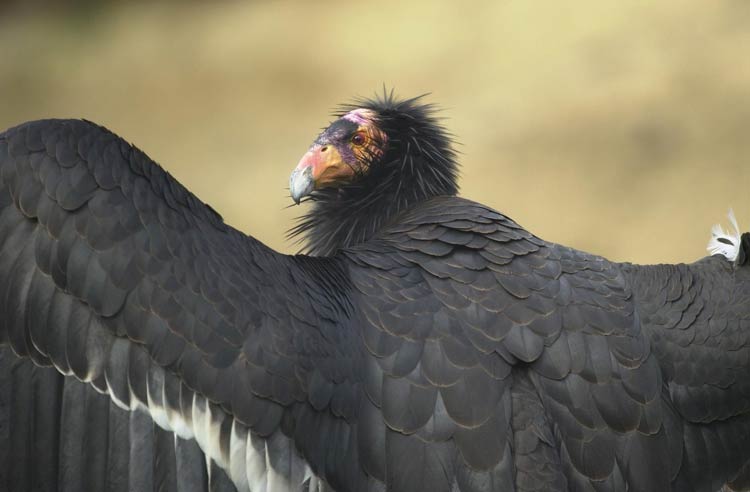
Characteristics
Appearance and size
The California condor is a large, majestic bird that is easily recognizable by its distinctive appearance. They have a black featherless head, neck, and crop, which are covered in a thin layer of downy feathers. Their body is covered in dark brown to black feathers, and their wings are broad and curved, allowing them to soar for long distances with minimal effort.
Male and female California condors are similar in appearance, with males being slightly larger than females. They have a wingspan of 2.9 meters (9.5 feet) and a body length of up to 1.4 meter (4ft 7in), and can weigh between 8-14 kilograms (18-31 pounds).
One of the most distinctive features of the California condor is its large bill, which is hooked and sharply curved, allowing the bird to easily tear open the tough hides of dead animals to feed on their flesh. They also have strong, powerful legs and talons, which are used to grip and manipulate food.
Overall, the California condor is an impressive bird with a unique appearance that makes it easily recognizable and a fascinating species to observe.
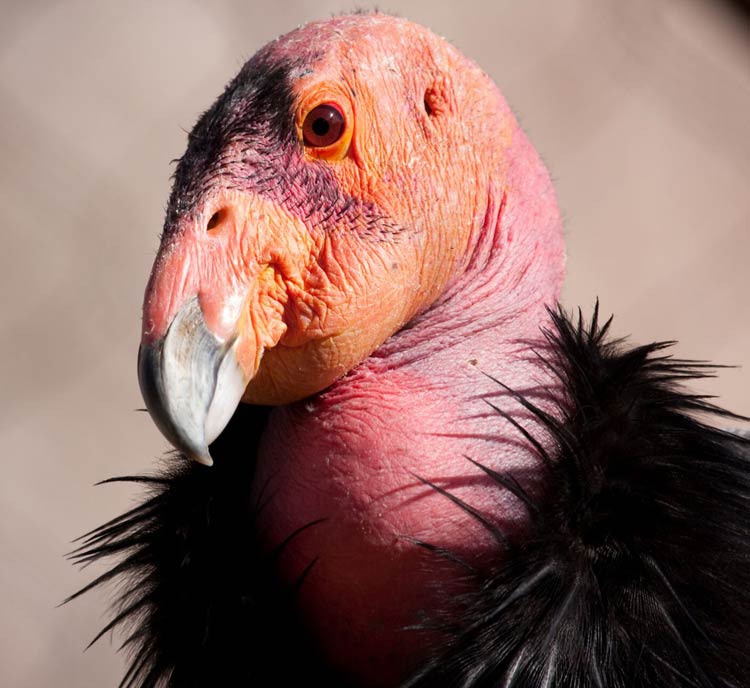
Behavior, Lifestyle and ecology
The California condor is a social bird that is often seen in large flocks, especially when feeding on a large animal carcass. They are highly intelligent birds, and have been observed exhibiting complex social behaviors and communication.
Condors are scavengers, and feed primarily on the carcasses of large mammals such as deer and cattle. They are capable of consuming large amounts of food in a single feeding, and will often go for several days without eating before having another large meal.
In the wild, California condors typically mate for life and will lay a single egg every one or two years. Both parents take part in incubating the egg and caring for the chick, with the male providing food for the female while she incubates the egg, and both parents taking turns feeding the chick after it hatches.
Condors are active during the day and will spend most of their time soaring in the air, using thermals to conserve energy as they search for food. They are also known to roost in cliffs and trees at night, where they can be seen preening and grooming their feathers.
Overall, the California condor is a fascinating bird with unique behaviors and a complex lifestyle. Conservation efforts have helped to stabilize their population, and they continue to be an important part of the ecology of the western United States.
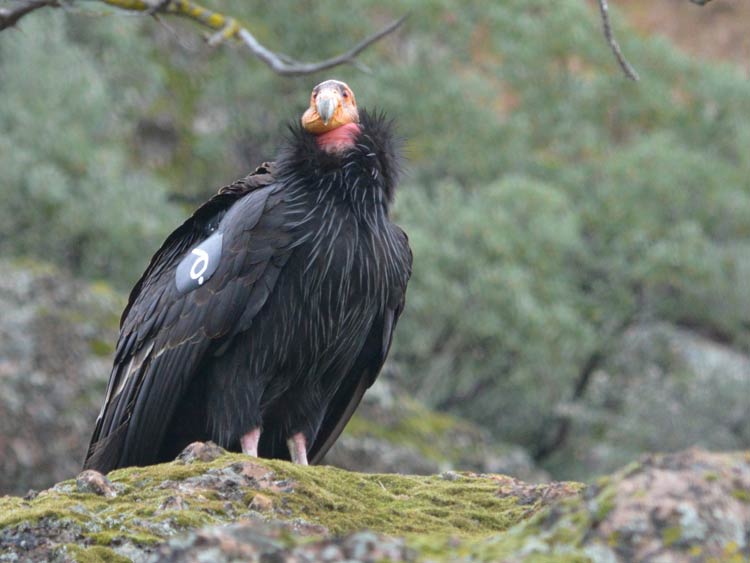
Diet
The California condor is a scavenger that feeds primarily on the carcasses of large mammals, such as deer and cattle. They have a large, hooked beak that allows them to easily tear open the tough hides of dead animals to feed on their flesh. They will also feed on smaller mammals, such as coyotes, as well as birds and reptiles.
Condors have a highly specialized digestive system that allows them to safely consume and digest carrion, which would otherwise be dangerous for other birds and animals due to the presence of bacteria and parasites. They have a gizzard-like organ that grinds up bones, helping them to extract nutrients from the carcasses they feed on.
In the wild, California condors will often compete with other scavengers, such as vultures and eagles (birds of prey), for food. However, due to their large size and powerful beaks and talons, they are often able to dominate at a carcass, driving away smaller birds and animals.
Overall, the California condor’s diet is an important part of its survival and plays a key role in the bird’s ecology and behavior.
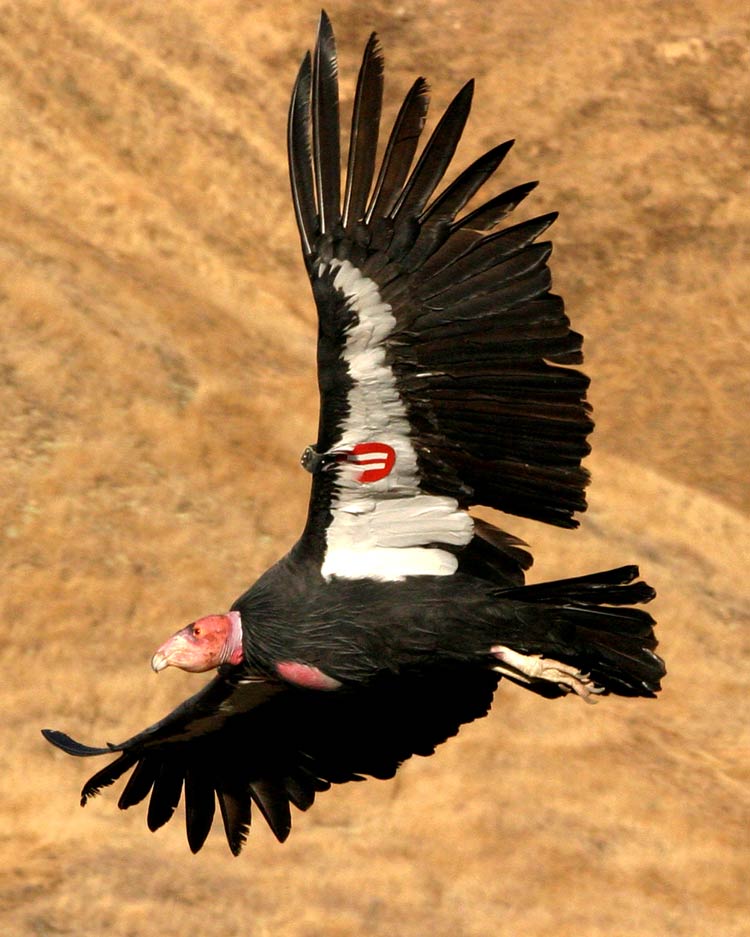
Reproduction and parenting
California condors typically mate for life and will lay a single egg every one or two years. Both parents take part in incubating the egg and caring for the chick. The incubation period lasts for approximately 56 days, with both parents taking turns sitting on the egg to keep it warm.
After the egg hatches, both parents take turns feeding the chick with partially digested food regurgitated from their crop. The chick will remain in the nest for approximately 6 months, during which time it will be fed by its parents and will grow rapidly, reaching its full adult size.
Condors have a slow rate of reproduction and will only lay one egg every one or two years. This, combined with a decline in their population due to habitat loss and exposure to lead poisoning, has led to a decline in the number of California condors in the wild.
Conservation efforts have helped to stabilize the population of California condors, and they continue to play an important role in the ecology of the western United States. By protecting their habitat and reducing exposure to lead poisoning, we can help ensure the survival of this magnificent bird for future generations.
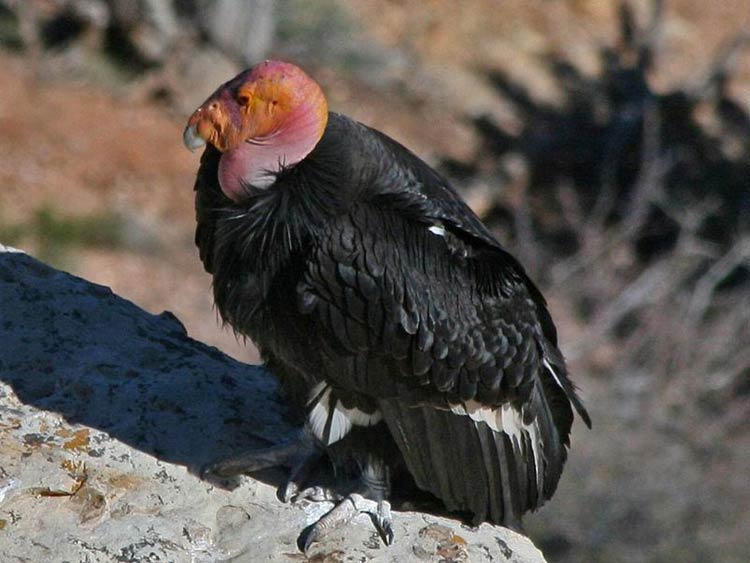
Predators and Threats
California condors have few natural predators, as their large size and powerful beaks and talons make them formidable birds. However, young chicks and eggs in the nest may be vulnerable to attack from predators such as golden eagles and bobcats.
The primary threats to the California condor are habitat loss, exposure to lead poisoning, and other forms of pollution. As human development and agriculture expand into the bird’s habitat, it has become increasingly difficult for condors to find sufficient food and safe nesting sites.
Lead poisoning is a significant threat to the California condor, as the bird may ingest lead fragments from the carcasses of animals that have been hunted with lead ammunition. Lead is highly toxic to birds and can cause a wide range of health problems, including weakness, starvation, and death.
Conservation efforts are underway to address these threats and protect the California condor. Habitat preservation and restoration, as well as education and outreach programs aimed at reducing exposure to lead, are among the measures being taken to help ensure the survival of this magnificent bird. By working together, we can help protect the California condor and preserve this species for future generations.
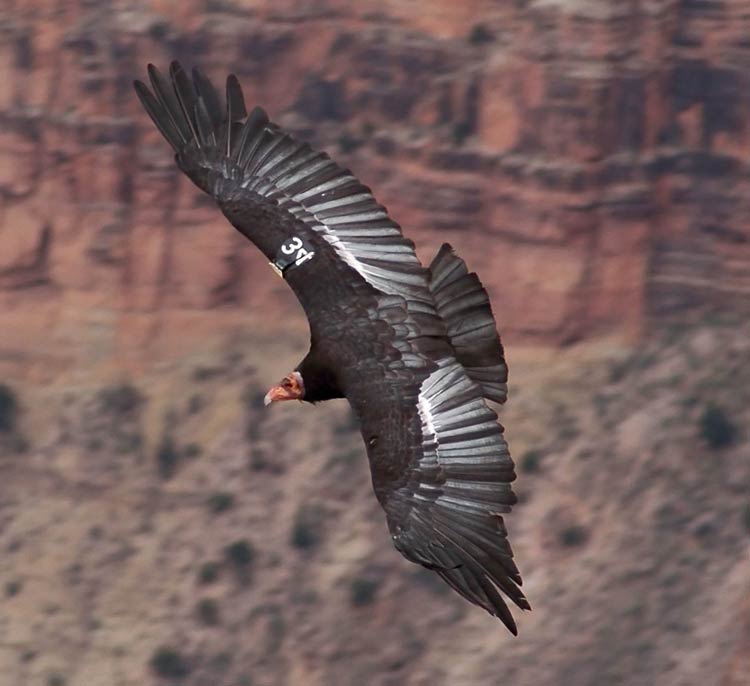
Interactions with humans
Historically, California condors had a close relationship with indigenous cultures in the western United States, who revered the birds as symbols of power and strength. However, as European settlers expanded into the region, the condor’s habitat was greatly reduced, and the bird became a symbol of conservation efforts to protect endangered species.
Throughout the 20th century, the California condor population declined dramatically due to habitat loss, hunting, and exposure to lead and other forms of pollution. By the 1980s, the number of condors in the wild had dwindled to just a few dozen individuals, leading to a captive breeding program aimed at saving the species from extinction.
Today, the California condor is a protected species, and efforts are underway to restore the bird to its former range. Conservation programs have been successful in increasing the number of condors in the wild, and the species is now considered a symbol of hope for endangered species everywhere.
Despite these efforts, the California condor remains vulnerable to habitat loss, lead poisoning, and other forms of pollution. It is important that we continue to work to protect this magnificent bird and its habitat, so that future generations can enjoy the beauty and majesty of the California condor.

Population
In the late 1980s, the California condor population had dwindled to just a few dozen individuals, making it one of the rarest birds in the world. In response, a captive breeding program was launched to help save the species from extinction. Through the efforts of dedicated conservationists, the California condor population has increased in recent years, and the species is now considered to be on the road to recovery.
By the end of 2022, there were more than 500 California condors in the world, with 337 living in the wild and the rest in captive breeding programs. Of the birds in the wild, about 200 live in California, with the remainder in Arizona, Utah, Baja California, and Mexico.
Conservation efforts have been successful in increasing the number of condors in the wild, and the species is now considered a symbol of hope for endangered species everywhere. However, the California condor remains vulnerable to habitat loss, lead poisoning, and other forms of pollution, and it is important that we continue to work to protect this magnificent bird and its habitat.
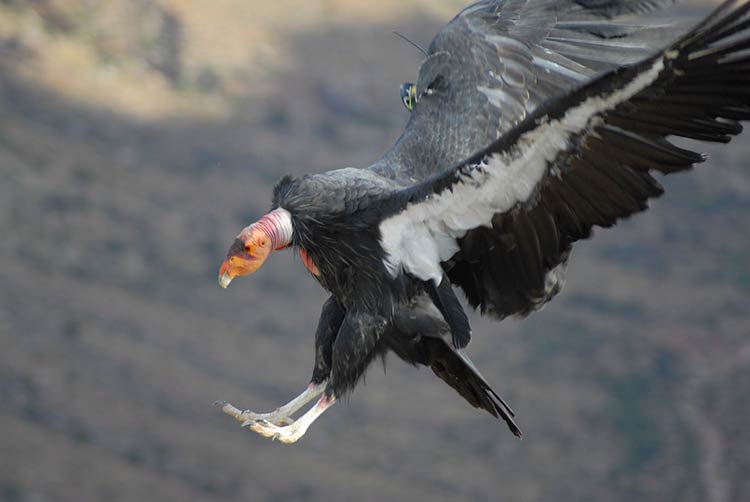
Status and conservation
The California condor is currently listed as a critically endangered species by the International Union for Conservation of Nature (IUCN) and the U.S. Endangered Species Act. This species was close to extinction in the late 20th century, with only a few dozen individuals remaining in the wild.
To help save the species, a captive breeding program was launched, and since then, the California condor population has gradually increased.
In addition to captive breeding programs, other conservation efforts have been implemented to help recover the species, including the release of captive-bred birds into the wild, habitat restoration, and efforts to reduce the threat of lead poisoning. Conservation programs have also been successful in increasing public awareness of the California condor and the importance of protecting endangered species.
Despite these efforts, the California condor remains vulnerable to habitat loss, lead poisoning, and other forms of pollution, and it is important that we continue to work to protect this magnificent bird and its habitat. Ongoing conservation efforts will be necessary to ensure the long-term survival of the California condor and to secure a future for this magnificent species.
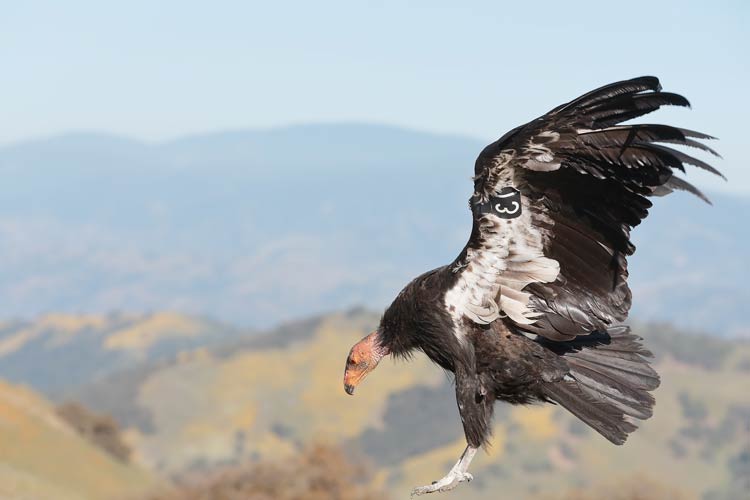
The California condor in culture
The California condor has been a part of Native American culture for thousands of years and has played a significant role in the folklore and mythology of many indigenous peoples. In some Native American cultures, the condor is considered to be a spiritual symbol of power and freedom, and is revered for its ability to soar to great heights and cover long distances.
In more recent times, the California condor has become an important symbol of conservation and the fight to save endangered species. The bird’s dramatic decline in population and subsequent recovery through captive breeding programs has captured the imagination of people around the world and has inspired efforts to protect not only the California condor, but other endangered species as well.
The California condor has also been featured in popular culture, including literature, film, and art. The bird’s impressive size and unique appearance have made it a popular subject for artists and photographers, and its role in Native American culture has inspired writers to include the condor in works of fiction.
Overall, the California condor has come to symbolize the majesty of the natural world and the importance of conservation, and its story continues to inspire people around the world to work towards a more sustainable future for all species.
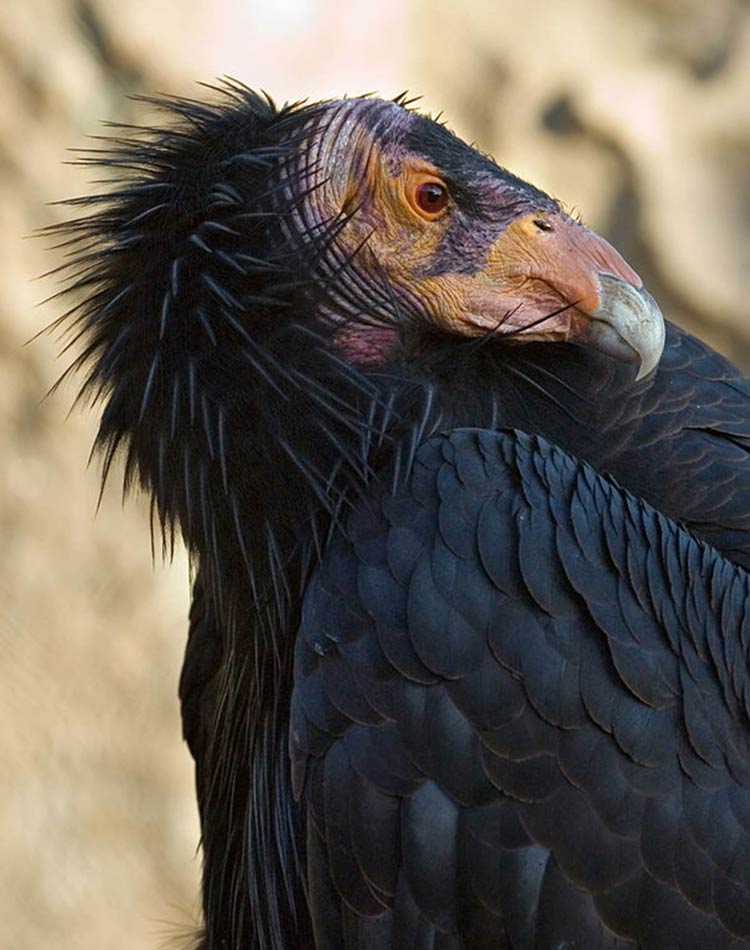
The California condor in movies
The California condor has been featured in a number of movies over the years, showcasing its beauty and significance as a species. Here are a few notable examples:
- The Wild Thornberrys Movie (2002)
This animated film features a California condor named Felipe, who helps the Thornberry family on their adventure. - Winged Migration (2001)
This documentary film follows the migration patterns of various bird species, including the California condor, as they travel thousands of miles each year. - Condor
To the Edge and Back (2018): This documentary film explores the history and status of the California condor, including its close brush with extinction and the efforts to save the species through captive breeding programs.
These films help to raise awareness of the California condor and its unique characteristics, as well as the ongoing efforts to conserve the species and its habitat. They also showcase the beauty and majesty of this magnificent bird and the importance of preserving our natural world for future generations.
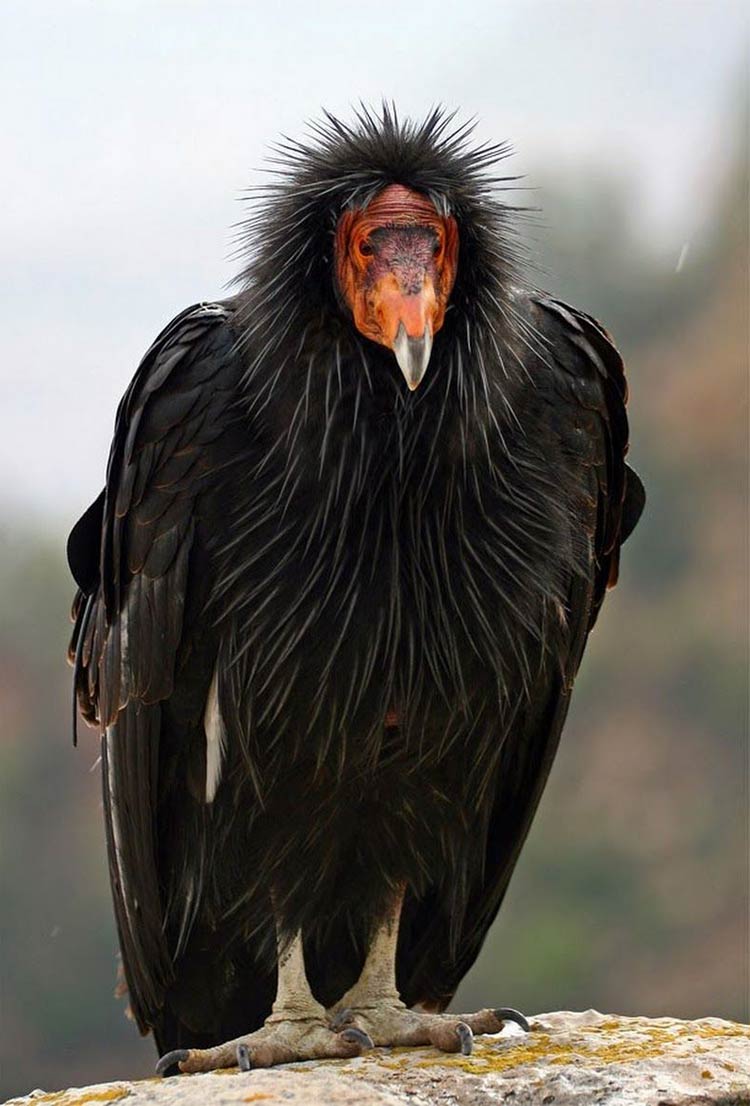
The California condor in numbers
- Historical population
Before the 20th century, it is estimated that the California condor population numbered in the thousands. - Lowest population size
By the 1980s, the California condor population had declined to just 22 individuals. - Captive breeding programs
To save the species from extinction, captive breeding programs were established in 1987. As of 2022, there are over 500 California condors in the world, with over half of them living in the wild. - Release sites
Since the 1990s, captive-bred California condors have been released at several sites in California, Arizona, and Baja California, Mexico. - Range
The current range of the California condor includes parts of California, Arizona, Utah, and Baja California, Mexico. - Wingspan
The average wingspan of a California condor is 2.49 to 3 m (8.2 to 9.8 ft), with wingspans of up to 3.4 m (11 ft) reported but not verified. - Weight
7 to 14 kg (15 to 31 lb)
Average weight: 8 to 9 kg (18 to 20 lb) - Lifespan
In the wild, California condors can live up to 60 years.
These numbers provide a snapshot of the status and conservation of the California condor, and highlight the dramatic decline and subsequent recovery of this magnificent bird.
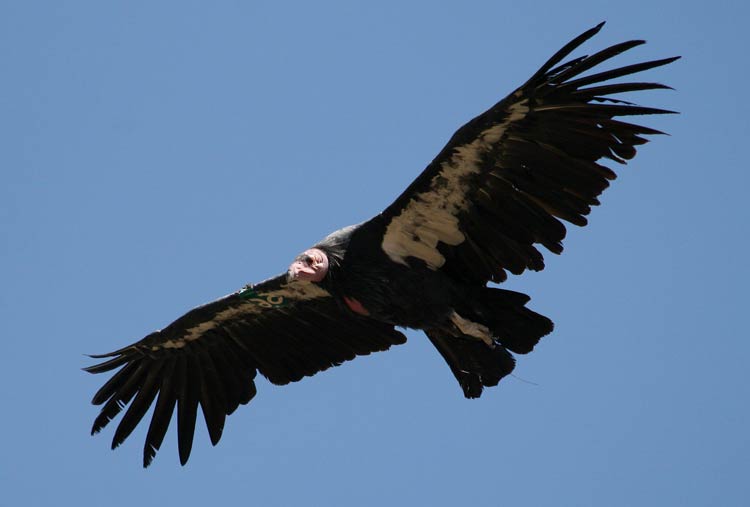
Interesting facts about The California condor
- Large bird
The California condor is one of the largest birds in North America, with a wingspan that can reach up to 3 m (9.8 ft). - Ancient bird
Fossil evidence suggests that the California condor has been present in North America for over 2 million years. - Scavenger
The California condor is a scavenger, feeding mainly on the carrion of large mammals such as deer, cattle, and horses. - Bald head
The California condor has a bald head, which helps to prevent bacteria from growing in its feathers and contaminating its food. - Mating for life
California condors mate for life and form strong bonds with their partners. - Long lifespan
California condors can live up to 60 years in the wild, making them one of the longest-lived birds of prey. - Slow to mature
California condors are slow to mature and do not reach sexual maturity until they are 5 to 6 years old. - Endangered species
The California condor is an endangered species, with only a few hundred individuals remaining in the wild. Conservation efforts, including captive breeding programs and releases, are underway to help recover the population.
These facts highlight the unique and fascinating characteristics of the California condor, as well as the challenges it faces for survival.
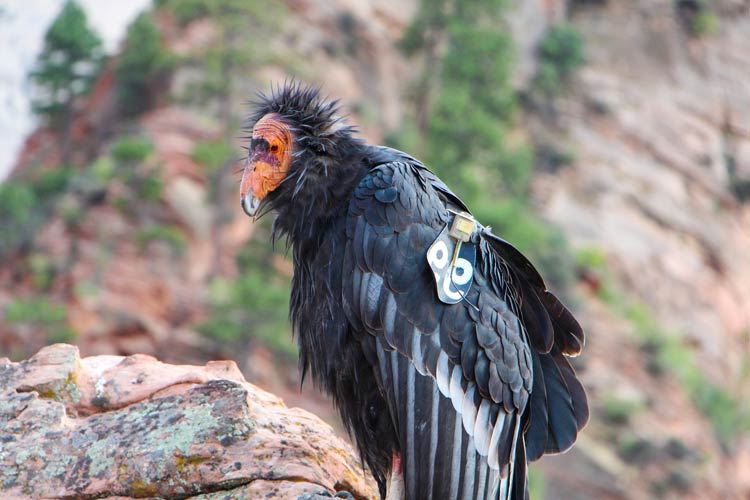
Q&A (questions and answers) about The California condor
Q: What is the California condor?
A: The California condor is a large bird of prey native to North America, known for its distinctive appearance and impressive size. It is one of the largest birds in North America, with a wingspan that can reach up to 3 m (9.8 ft).
Q: What does the California condor eat?
A: The California condor is a scavenger, feeding mainly on the carrion of large mammals such as deer, cattle, and horses.
Q: Where does the California condor live?
A: The California condor is native to the southwestern United States and northwestern Mexico. Its historical range once extended from British Columbia to Baja California, but now it is restricted to a smaller area.
Q: What are the unique features of the California condor?
A: The California condor has a bald head, which helps to prevent bacteria from growing in its feathers and contaminating its food. It also mates for life and forms strong bonds with its partners, and can live up to 60 years in the wild.
Q: Is the California condor endangered?
A: Yes, the California condor is an endangered species, with only a few hundred individuals remaining in the wild. Conservation efforts, including captive breeding programs and releases, are underway to help recover the population.
Q: What are some challenges faced by the California condor?
A: The California condor faces a number of challenges, including habitat loss, lead poisoning, and low genetic diversity. Conservation efforts are underway to address these challenges and recover the population.
These questions and answers provide a basic overview of the California condor and its unique characteristics, habitat, and status.
